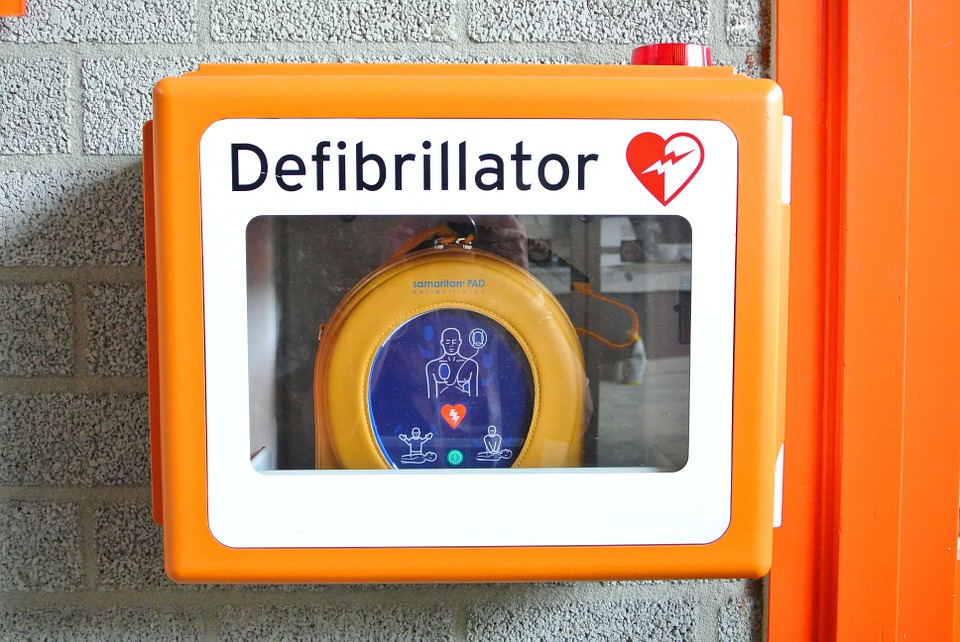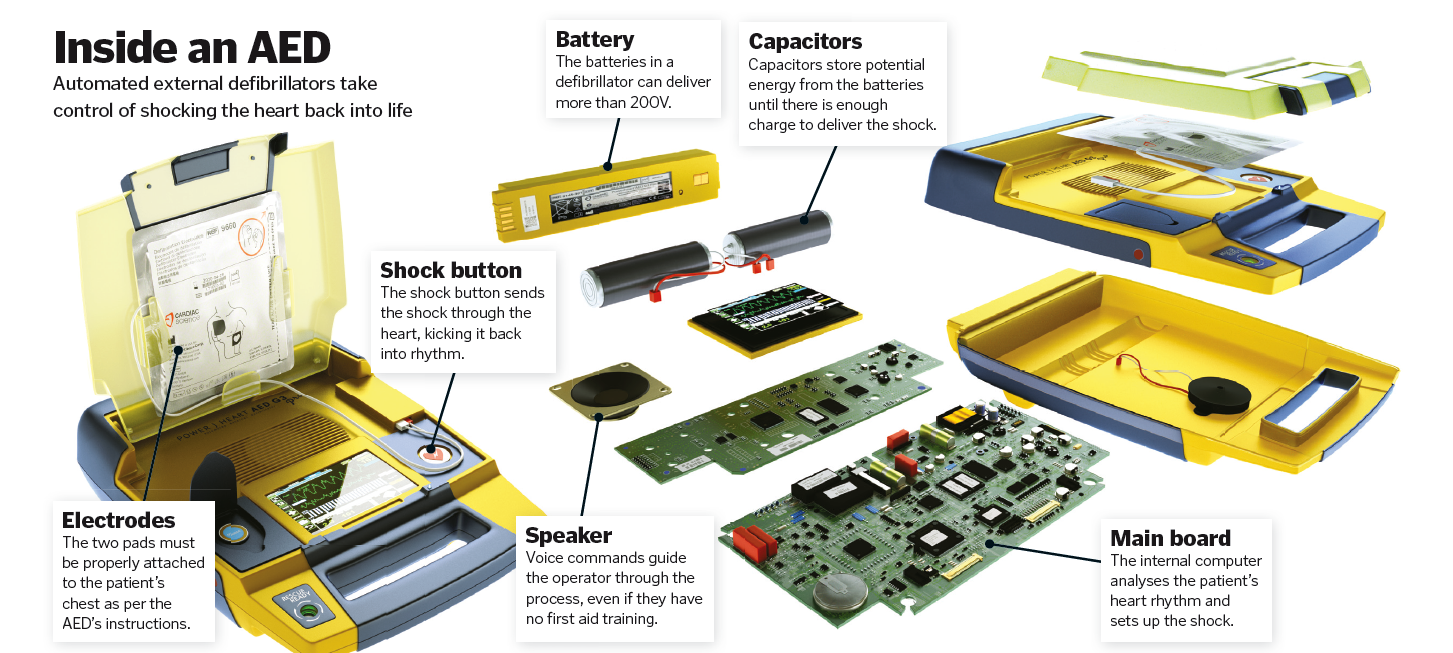Defibrillators: how does restarting hearts work?

How defibrillators use electric shocks to bring struggling hearts back to life
Your heart has a built-in pacemaker that keeps its muscle cells beating in time. A patch of cells called the sinoatrial node sends electrical signals through the heart in rhythmic waves. You can hear the gentle ‘lub. dub’ rhythm of its co-ordinated beats in your chest. But sometimes the pacemaker loses control, the muscle cells stop working together and the heart starts to fibrillate. Rather than a contract in orderly waves, a fibrillating heart wobbles and falters, meaning blood can’t get around the body as normal.
How defibrillators work
They give the heart a high-energy electric shock, resetting the muscle and allowing the sinoatrial node to take back control. If someone’s heart is in trouble, the first step is to diagnose the problem using an electrocardiogram. This machine reads the heart’s electrical activity, which dictates the voltage and timing of the shock required. Paddles are then placed on the chest wall: one above and to the left of the heart and one below and to the right.

Releasing charge into the paddles
Then capacitors store the required charge before releasing it into the paddles, through the chest and across the heart. It takes an expert to operate a manual defibrillator, like the ones in ambulances and hospitals, but many places now store automated external defibrillators (AEDs), which allow untrained people to deliver the same treatment. Using two sticky pads, AEDs pick up heart activity and use an algorithm to work out the best course of action, then they guide you through the process. Finding your nearest AED in an emergency could save someone’s life.
This article was originally published in How It Works issue 116, written by Laura Mears
For more science and technology articles, pick up the latest copy of How It Works from all good retailers or from our website now. If you have a tablet or smartphone, you can also download the digital version onto your iOS or Android device. To make sure you never miss an issue of How It Works magazine, subscribe today!





